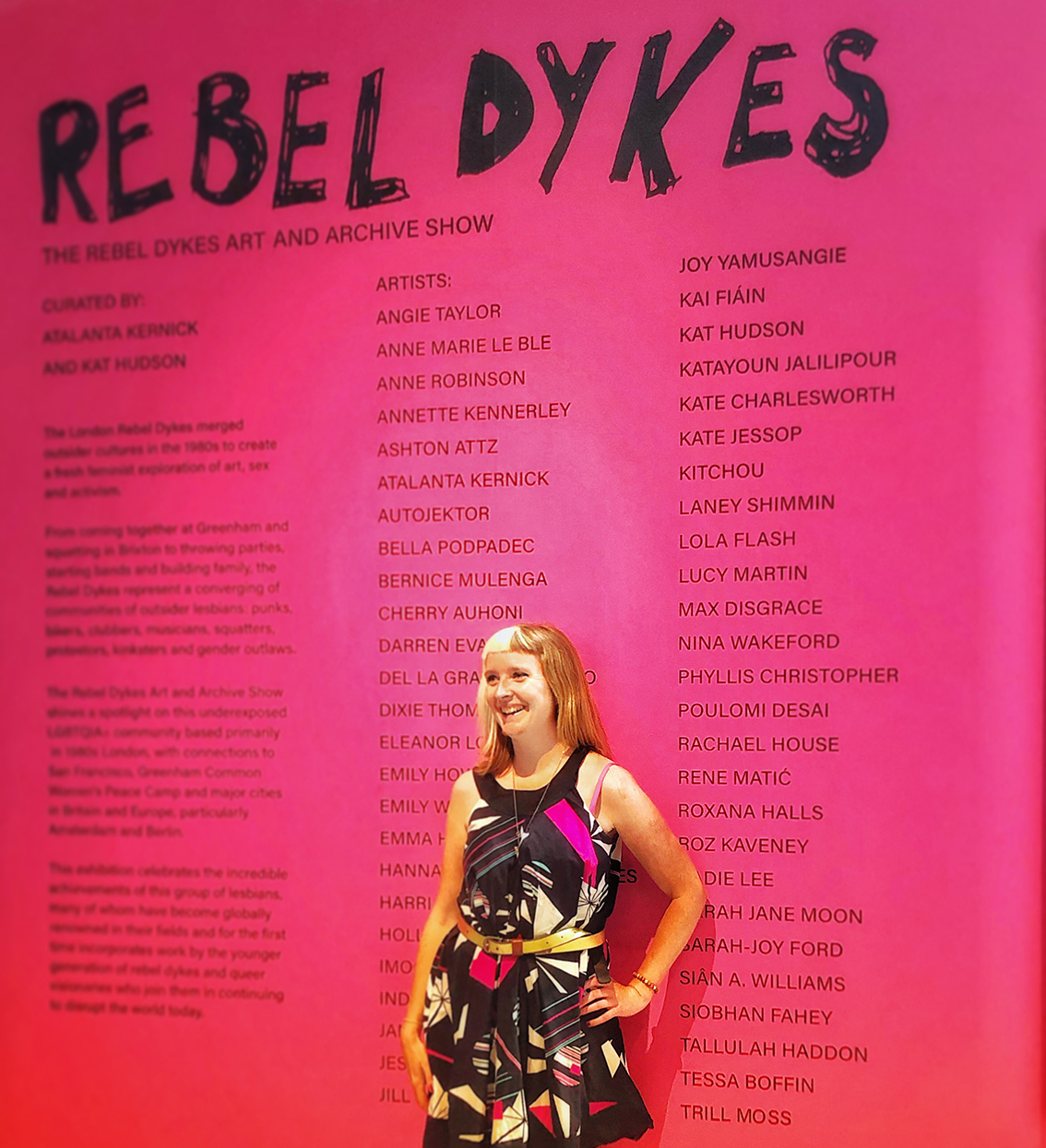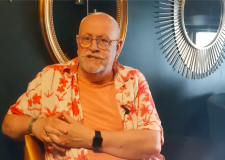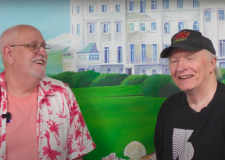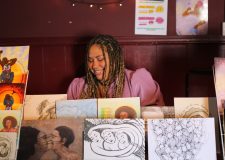Local Animator Kate Jessop
Deborah Espect catches up with local Animation Filmmaker Kate Jessop, who recently hosted the very first Brighton Animation Festival at The Latest MusicBar.
Kate Jessop is a multi-award-winning animation director based in Brighton. Her work has been screened in hundreds of festivals and she is often invited to deliver talks and workshops and to curate animation events.
– Can you tell us about some of your achievements to date?
I have screened at hundreds of film festivals, won numerous awards including Best Comedy Series at the London Short Series awards for Tales From Pussy willow my adult animation series. I represented the UK in the Best of Women in Film and TV, have 6 distribution deals, had my first retrospective in USA in 2019 and then my second one in Czech Republic this year. I was selected for the Berlinale Talent Lab in 2019 for both my portfolio as a director and in the project lab (10 projects selected internationally) for my series Tales From Pussy Willow.
– You recently took part in the Rebel Dykes exhibition. For those who don’t know, Rebel Dykes is a fantastic, must-see documentary about a group of fierce lesbians in post-punk London, and it’s been getting a lot of attention in the press. Can you tell us about the exhibition and your involvement in it?
Rebel Dykes is a feature film made by a couple of friends of mine from Manchester – Harri Shanahan and Siobhan Fahey. Harri had previously worked on the first Queer Heroes film and told me about the feature that was coming up. It features some friends of mine, Debbie Smith (who was featured in the first Queer Heroes film) and Atalanta Kernick who later went on to curate the show with Kat Hudson of Lesley magazine. They were wanting to feature queer artists both from that era but also showcase the work of newer generations. I was totally honoured to be asked to participate.
– There seems to be a lot of courses out there to learn the basics of animation; perhaps it’s a little overwhelming for people who are just starting! What would you recommend?
Start off by making a flip book and see if you like it. You can download free apps on your phone such as Stop Motion Pro to do stop frame or object animation. Draw everyday. Keep a note book of ideas. Learn the principles. And then the software. Never stop doing life drawing classes as that will inform your knowledge of posing and gesture as well as anatomy.
– What was your own learning process?
I was basically, and still am, a massive nerd as a kid. I was obsessed with drawing, always making comics and flip books. I basically taught myself how to animate lip synch when I was 10 years old by drawing the mouth shapes from the mirror. Years later, after reading Preston Blair et al, I realised I had worked it out correctly, the same as the old greats. I later went to art school and studied illustration. There was an animation component where we learnt to animate on paper with a peg bar and light box. And direct filmmaking so painting and scratching on film on a light box (the sprocket strips on the borders on my website are taken from that). I later did a masters in Digital Film and Animation where I learnt After Effects, green screen compositing etc which is what I make Pussy Willow on now. I feel quite lucky to have been schooled in both traditional analogue processes as well as digital.
– Do you have to be very good at drawing to be an animator?
Essentially yes but there are forms of animation that don’t require drawing for production, such as lens-based animation like object animation or stop motion, or 3D animation which is based on creating a model and key framing it into the poses. However drawing underpins everything from development thumbnails to storyboarding. But in terms of the realisation there’s lots of animators that use other methods i.e. Jan Svankmeyer used only stop frame and pixilation and was much more lens based.
– What animators inspire you?
In terms of directors it was Michel Gondry that originally inspired me to become a filmmaker. There’s some brilliant work coming out of eastern Europe right now from Poland and Hungary such as Renata Gasiorowska and Flora Anna Buda. I’ve also been really inspired by a lot of comedy that’s come out America recently. The way that BoJack Horseman uses traditional animation methods such as anthropomorphism to discuss relevant cultural issues such as gun crime in America, the #metoo movement or asexuality is just genius. Broad City isn’t animation but is a brilliant depiction on life through the female lens. I was also influenced by a lot of British comedy such as Smack the Pony, The Fast Show and the Mighty Boosh.
– And where do you draw your inspiration from to animate?
I do a lot of client work, in which case I deliver whatever is written on the brief.
In terms of my own work as a writer-director, I like to tell stories through animation that I don’t think are being heard. With the Queer Heroes series I wanted to celebrate a lot of the people who had gone before us and then with Modern Queer heroes, are currently working to make things better for the LGBTQ+ community and have helped move things forward for the rest of us.
In regards to Tales From Pussy Willow, I’d been casually writing comedy for a few years, just scribbling ideas into notebooks. A few years ago I just got it all down into scripts and sent it to some people as I wasn’t sure if it was funny or not. I got some very positive feedback so decided to make it. Anna Maguire was one of the first people I sent the scripts to and she immediately said yes and has been in every series since! I’d say all my work broadly is about the human experience realised by an experimental process. I like writing comedy as a way of processing the world and things that have happened to me. Although TFPW is funny, it also addresses serious issues such as misogyny and homophobia. I’d like to think I’m holding a mirror up to society and calling people out. I think if you can make someone laugh they are more likely to engage with a challenging topic. I take it to such an absurd extent it’s ridiculous, but also thought provoking at the same time.

– Can you describe your personal style of animation?
Originally I went to art school and did illustration – you can see that influence in the style of filmmaking I do. I just really love collage and tactile media. Even though everything is done on the computer now, I like to give it quite a ‘timeless’ feel, so quite textured and painterly. Vector graphics and really slick digital graphics just leave me cold but that’s just my personal taste.
– It seems that a lot of people still don’t realise what a long process animating is. Can you talk us through it?
Animation is 12 frames a second of tiny increments of change. These frames can either be drawn, or shot on a camera moving something with those tiny increments of change. 12 images need to be created so for one minute that’s 720 images. For example a 3 minute film has 2160 images that need to be created. There’s also the pre-production that happened before, so ideation and design. And then compositing the animation together at the end with different backgrounds or lighting.
– Let’s say I come with you with an idea for a new animation. How would we go from that to a finished product?
First of all you tell me the budget to see if we can work together 🙂
Then we have a meeting and you communicate with me what you are trying to achieve from this piece. I make a treatment and send it to you for approval. Once the ideation is approved I start pre- production, such as asset design and storyboard. You may wish to see an animatic as this stage, too. I start some animation tests and send them over to see if I’m still on the right track. If you’re still loving everything I do at this stage you leave me alone and let me get in the zone in my Animation Cave and I’ll let you know when it’s done. You pay me half at the start and half at the end on completion, just like a plumber 😉
– What’s your favourite part of being an animator?
Seeing things come to life is still so magical to me. Travelling the world with my work and meeting lots of amazing animators on the festival circuit.
– And your least favourite?
Clients who have no idea how long everything takes. And then having to compromise social activities to live in your Animation Cave until the tight deadline is met.
– How tough or easy would you say it is to get a job as an animator?
In Covid times, animation has been booming, as a lot of jobs that traditionally may have gone to live action have gone to animation, as it can be done remotely.
– You recently hosted the very first BIAF – the Brighton International Animation Festival, at the Latest MusicBar. I understand that it was the first animation festival in Brighton, which was very surprising! For those who weren’t there, can you tell us what they missed?
We had curated programmes of films from all over the world such as Czech Republic, Canada and China. Programmes were into themes such as Puppet Stories, Sound and Vision and Global Visions. There was also a hands-on animation workshop from Leo Crane of Figuration who hosted a charcoal erasure animation workshop. The series producer from Karrot Animation (responsible for Sarah & Duck and Peppa Pig) did an industry talk on the Sunday, giving behind the scenes glimpse into their studio and tips for getting into the industry. There was also an animation karaoke battle on the Saturday night!
– And lastly, what work of yours can we look forward to seeing in the near future?
Currently developing Tales From Pussy Willow with more scripts and characters!
Follow @katejessopfilm on Instagram for more!





















